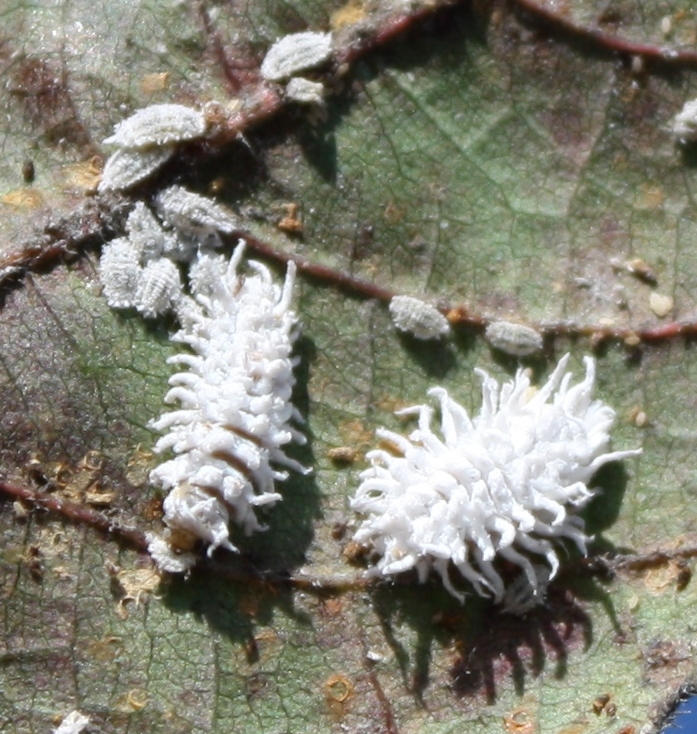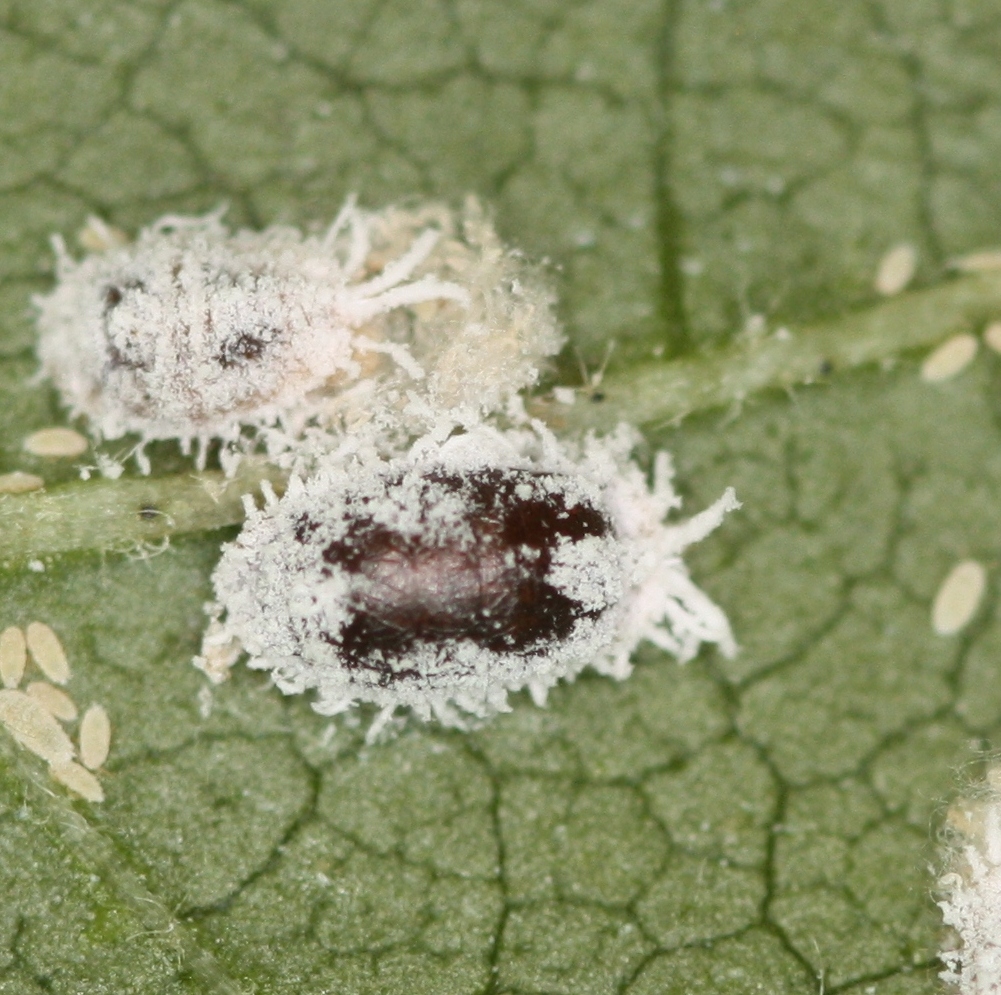Solenopsis mealybug (Phenacoccus solenopsis) was first identified at Emerald and the Burdekin during the 2009-10 cotton growing season. This sucking pest causes leaf distortion, stunting and reduced boll size and number. Heavy infestations can lead to plant death. Solenopsis mealybugs also produce a honeydew which affects photosynthesis and leads to sooty mould development on lint. This pest has the potential to significantly reduce yield.
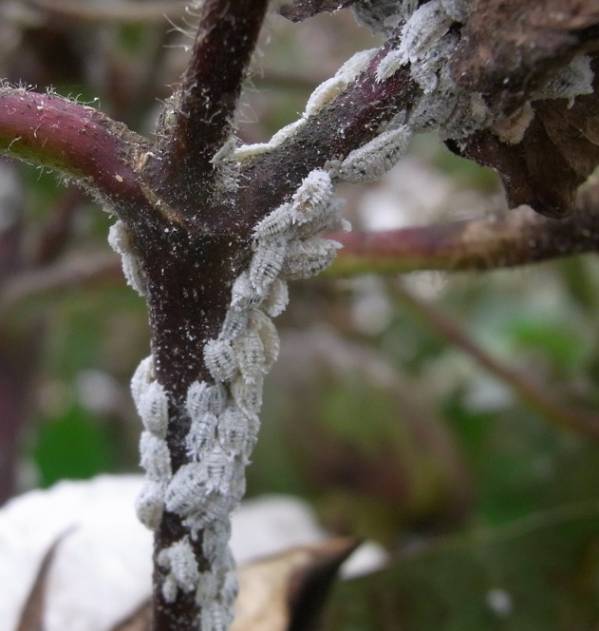
Several chemical trials for the control of solenopsis mealybug were conducted this past season. Field trials took place in both Emerald and Byee at the late crop stage. (Unfortunately the Emerald trial was inconclusive due to heavy rain and storm activity which impacted on the mealybug population there).
Field trials indicate that many insecticides have little impact on the mealybug population although some reduced numbers by up to 60%. Unfortunately these chemicals had a heavy impact on beneficials. This loss of beneficial activity in the crop allows mealybugs to thrive unchecked and this results in greater crop damage. This was clearly evident in one crop of conventional cotton which was sprayed five times throughout the growing season with disruptive chemicals. As a result mealybug numbers increased rapidly at boll opening stage resulting in significant sooty mould on open bolls.
Results from the field trials also determined that insecticides used for the control of other cotton insect pests were not effective in controlling late season infestations of mealybug. This, together with other trial results led researchers to conclude that insecticides may not be the answer for mealybug infestations. Beneficials remain the best management option for mealybug control in the later stages of the season. Key predators associated with mealybug control include green lacewings, Cryptolaemus lady beetles (pictured below), other lady beetles including three banded, transverse and Hippodamia.
Other observations made during the season also indicated that pre-planting operations such as herbicide applications, pupae busting and insecticide treated seed reduced early mealybug influx. This is important when considering options for fields which have a previous history of mealybug infestation.
New mealybug parasitoid
A key development this season was the discovery of a previously undetected parasitoid of mealybug in the Byee trial field. This parasitoid was identified by John LaSalle (CSIRO) as Aenasius bambawalei. Another beneficial, a hyperparasitoid (which develops within the already established parasitoid), Prochiloneurus Silvestri was also recorded at this location. The parasitoid has been recorded on P. solenopsis in India and Pakistan, and may have been introduced at the same time. Observations on the level of parasitism during the latter part of the season, remained relatively low (<10%). Further research on Aenasius bambawalei is planned for the coming 2012/13 cotton season.
The female parasitoid is pictured below (left) and a healthy (top) and a parasitised mealybug (bottom) in the right hand image.
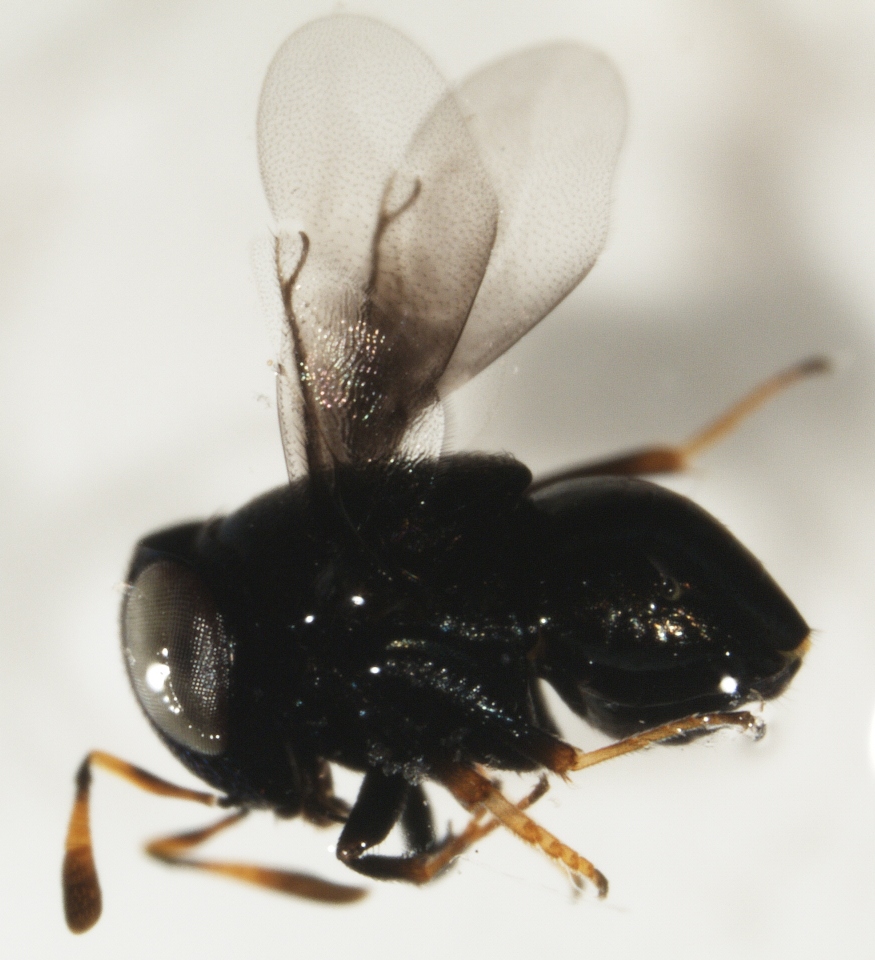
Boll rot bacterium
In addition to the Solenopsis research, the cotton pest team also examined a number of damaged bolls from across cotton growing regions. These damaged bolls were found to contain a bacterium, Pantoea agglomerans. This wasthe first time this bacterium was identified to be associated with boll rot in Australian cotton. Three species of fly, which potentially play a role in introducing the bacterium into the bolls, were also identified. All three species of fly were found in unsprayed Bollgard cotton, var. 71BRF, in Kingaroy where 80% of the bolls were rotten. A major concern with this boll rot is that, from the outside, medium to large size bolls looked normal but once bolls were cut open, all locules were damaged and maggots were found inside.
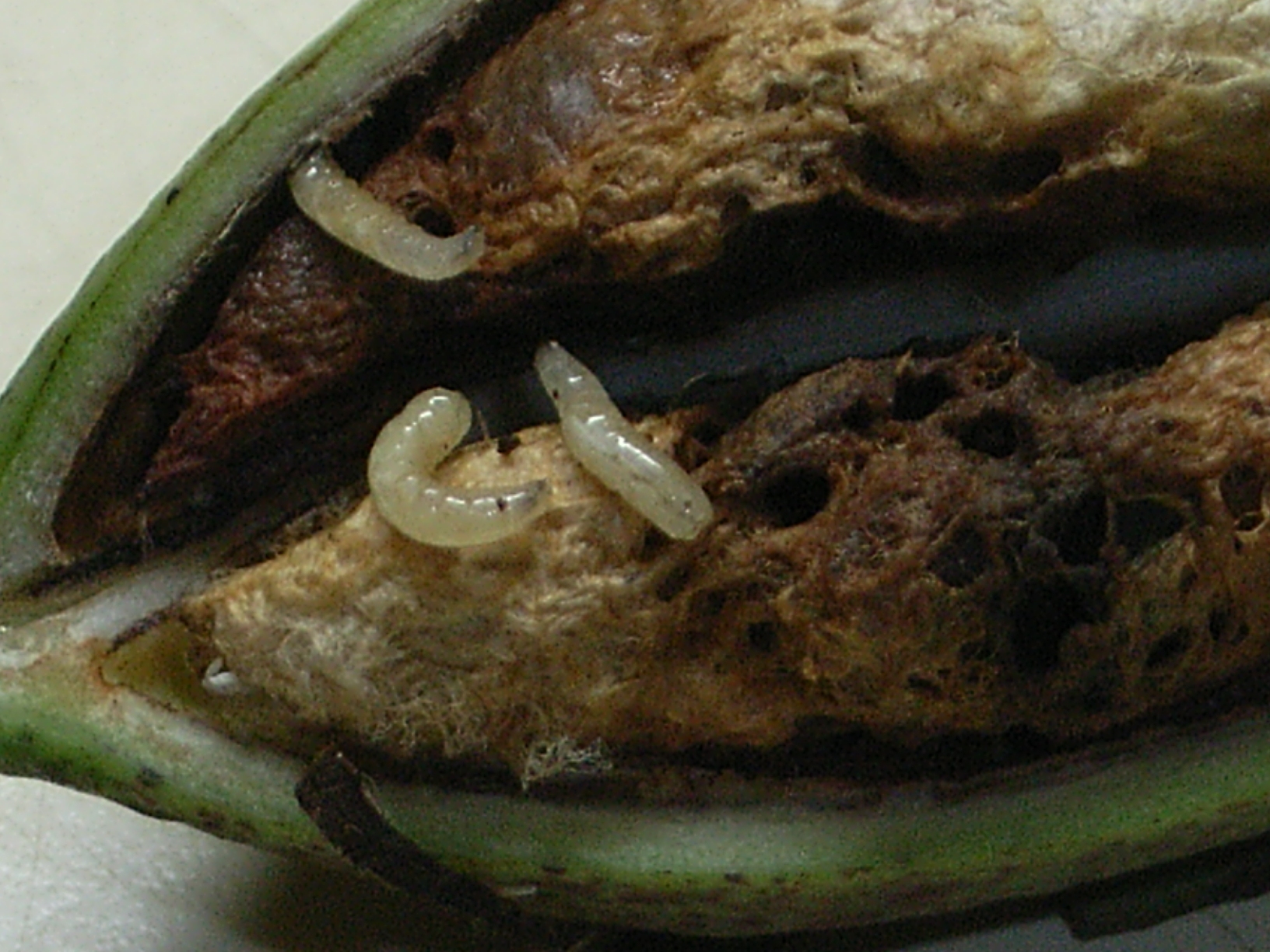
Article summarised by Kristy Byers
For any further information please contact DAFF Entomologist Dr Moazzem Khan on (07) 4688 1310.

